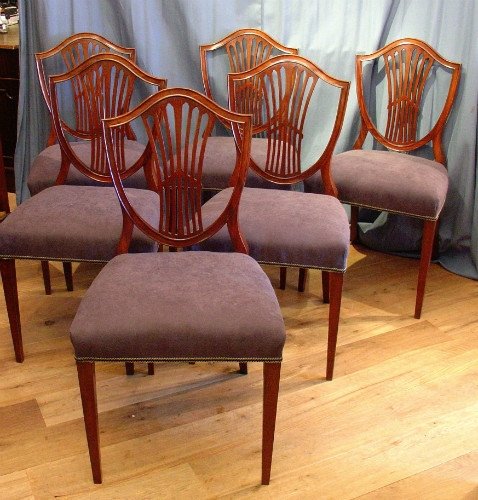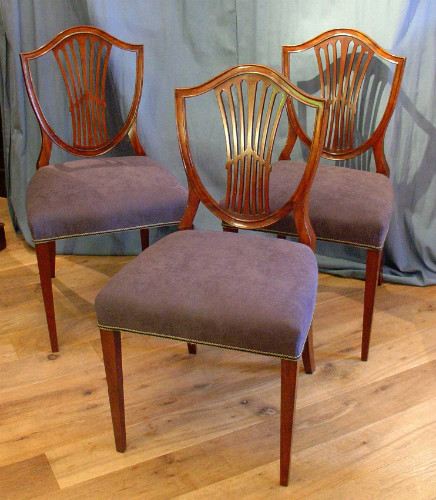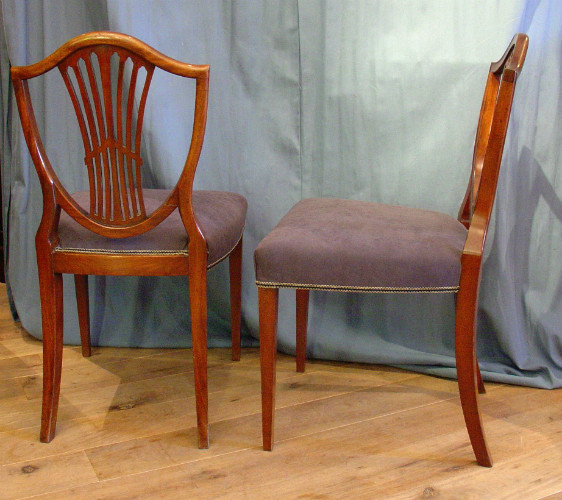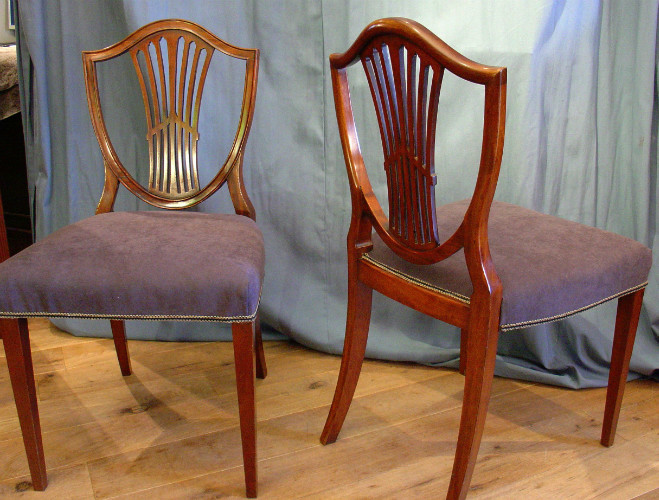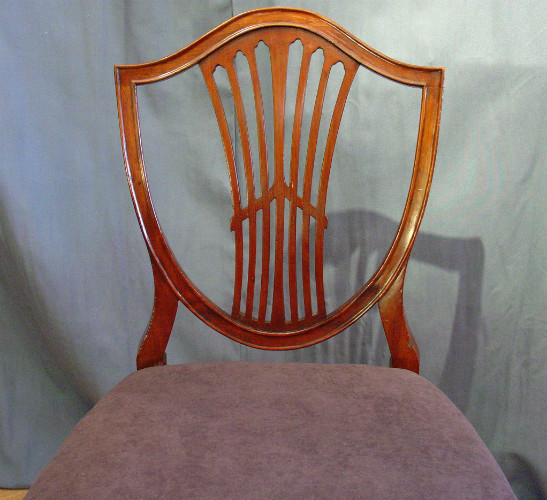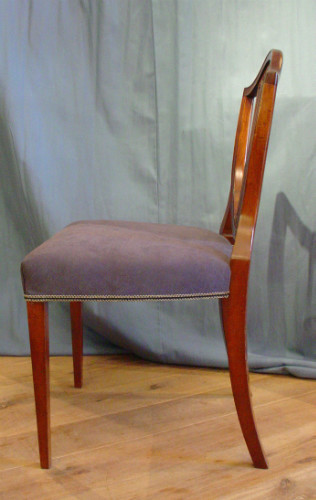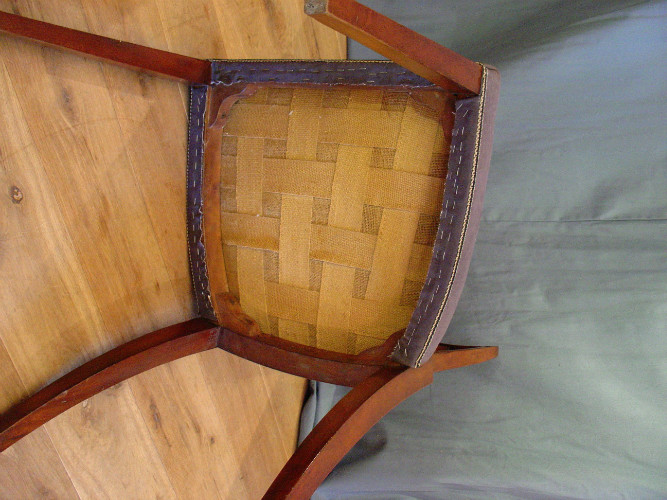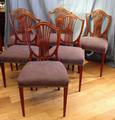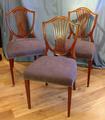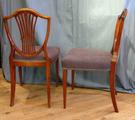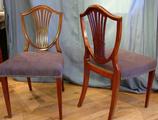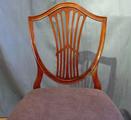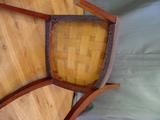6x Howard and Sons chairs
€ 1295.00
This is a lovely elegant set of late 19th century mahogany shieldback chairs made by the famous London chair and sofa company Howard and Sons (see below), they have been restored and re-upholstered, should be good for the comming half century now!
size : 50cm x 50cm x 93cm high.
Howard and Sons of Berners Street in London were the foremost upholstery maker of the nineteenth century, regarded in the same way as Gillow were for cabinet furniture. Howard and Sons were such an important company that they collaborated with Gillow on several important projects and may have even manufactured pieces of upholstered furniture for Gillow as well as other important makers such as Maple and Co.
Howard and Sons exhibited at all the large exhibitions of the nineteenth century including the Great Exhibition of 1851 and the subsequent shows at Crystal Palace, as well as exhibitions in America and France. Howard and Sons had the Royal Warrant and supplied several Royal residences with many items of antique furniture, most frequently of course with upholstery.
Although Howard and Sons supplied almost any item for the nineteenth century house and were renowned for their excellent build quality and superb finishing in all areas of chattels and interior decorating, it is their upholstered furniture for which the company is now so famous.
Howard and Sons really lead the way with the design and manufacture of upholstered furniture in the nineteenth century. The upholstered easy armchairs, sofas, wing chairs, library chairs, stools, pouffes, chaise longues and day beds made by Howard and Sons were better than normal pieces of the same period in many ways. Details such as the "siege de duvet" upholstery system for comfort, pocketed cushions, quad lashed springs and so on are all key features that other makers were simply not using, whether through lack of competence or because of cost.
More interesting, perhaps, is that while leading the way as far as innovation and engineering is concerned, Howard and Sons held onto many decidedly traditional upholstering techniques long after other manufacturers had modernised. Some of these methods were decidedly eighteenth century and must have made Howard and Son's upholstery much more expensive than that of other contempory makers. Howard and Sons of Berners Street in London were the foremost upholstery maker of the nineteenth century, regarded in the same way as Gillow were for cabinet furniture. Howard and Sons were such an important company that they collaborated with Gillow on several important projects and may have even manufactured pieces of upholstered furniture for Gillow as well as other important makers such as Maple and Co.
Howard and Sons exhibited at all the large exhibitions of the nineteenth century including the Great Exhibition of 1851 and the subsequent shows at Crystal Palace, as well as exhibitions in America and France. Howard and Sons had the Royal Warrant and supplied several Royal residences with many items of antique furniture, most frequently of course with upholstery.
Although Howard and Sons supplied almost any item for the nineteenth century house and were renowned for their excellent build quality and superb finishing in all areas of chattels and interior decorating, it is their upholstered furniture for which the company is now so famous.
Howard and Sons really lead the way with the design and manufacture of upholstered furniture in the nineteenth century. The upholstered easy armchairs, sofas, wing chairs, library chairs, stools, pouffes, chaise longues and day beds made by Howard and Sons were better than normal pieces of the same period in many ways. Details such as the "siege de duvet" upholstery system for comfort, pocketed cushions, quad lashed springs and so on are all key features that other makers were simply not using, whether through lack of competence or because of cost.
More interesting, perhaps, is that while leading the way as far as innovation and engineering is concerned, Howard and Sons held onto many decidedly traditional upholstering techniques long after other manufacturers had modernised. Some of these methods were decidedly eighteenth century and must have made Howard and Son's upholstery much more expensive than that of other contempory makers.

